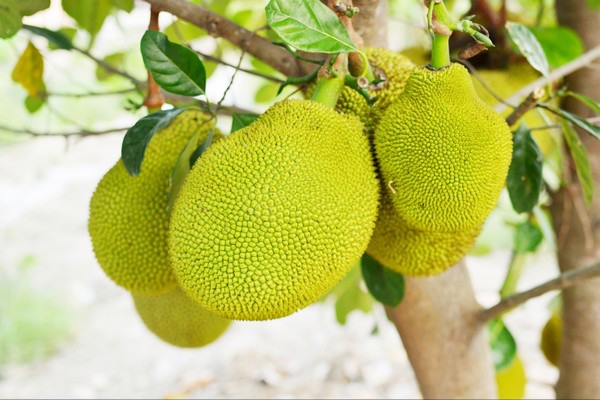The market on Jackfruit seems to be shifting.
“Jackfruit used to be a rare fruit item. But nowadays, it’s often a flooded item and very competitive on price,” says Andy Khau with Be-On Produce, Inc. in Commerce, CA.
“We used to sell 90,000 lbs. or two loads of it weekly. But then that cut to half and then a quarter of that due to overproduction,” says Edgar Khau, also with Be-On. “More customers like to buy in smaller scales, such as one to two pallets per week and not five to 10 pallets or a truck load as they did years ago.”
Supplies of the unique fruit are available year-round from Tepic and Nayarit, Mexico though prime selling times are from February through to October. “November to January, the fruit is not ripening fast. It stays green and therefore less people buy it during this period,” says Edgar Khau.

Different customer specifications
Preferences for how ripe the fruit is also largely depends on the ethnic community consuming it. “Customers in the Indian community use greener, smaller fruit—eight to 10 lbs.—and use the unripe fruit for cooking. The Southeast Asian community use riper, bigger fruits—20 lbs.+ each—and eat the yellow meat within,” says Andy Khau. Traditionally he says good Jackfruit should be green, firm and oval in shape and has uses ranging from juices to being cooked in dishes, dehydrated or eaten fresh.
As for price, when the market was less competitive, price generally ranged around $1/lb. “But now prices are going down every year and it’s as low as .30 cents/lb.,” says Edgar Khau, noting the price currently sits at .60 cents/lb. which is similar to last year at this time.
“COVID-19 also impacts sales since many markets only operate at 50 percent of their capacity. If their sales are slow, fruit will turn black/rotten. It is a dessert item and not edible daily like an apple or banana,” says Edgar Khau. “This means it’s no longer a profitable item and it’s not a rare item anymore. You can still make a bit of money if there isn’t overproduction. But it turns bad if it’s not moving fast enough.”
For more information:
Andy Khau
Edgar Khau
Be-On Produce, Inc.
Tel: +1 (323_ 726-8882
AndyBeOnProduce@gmail.com
EdgarBeOnProduce@gmail.com
www.beonproduce.com
